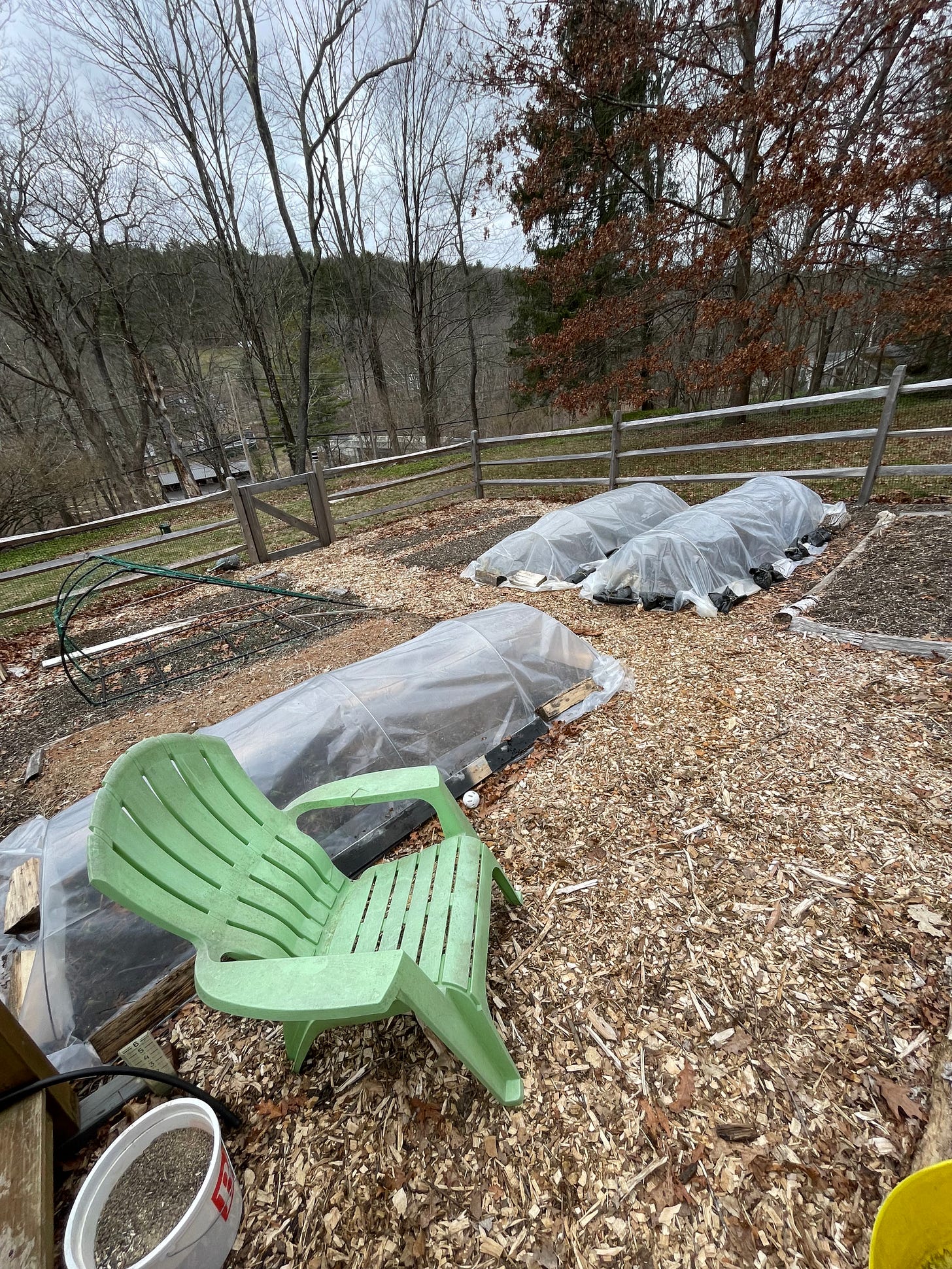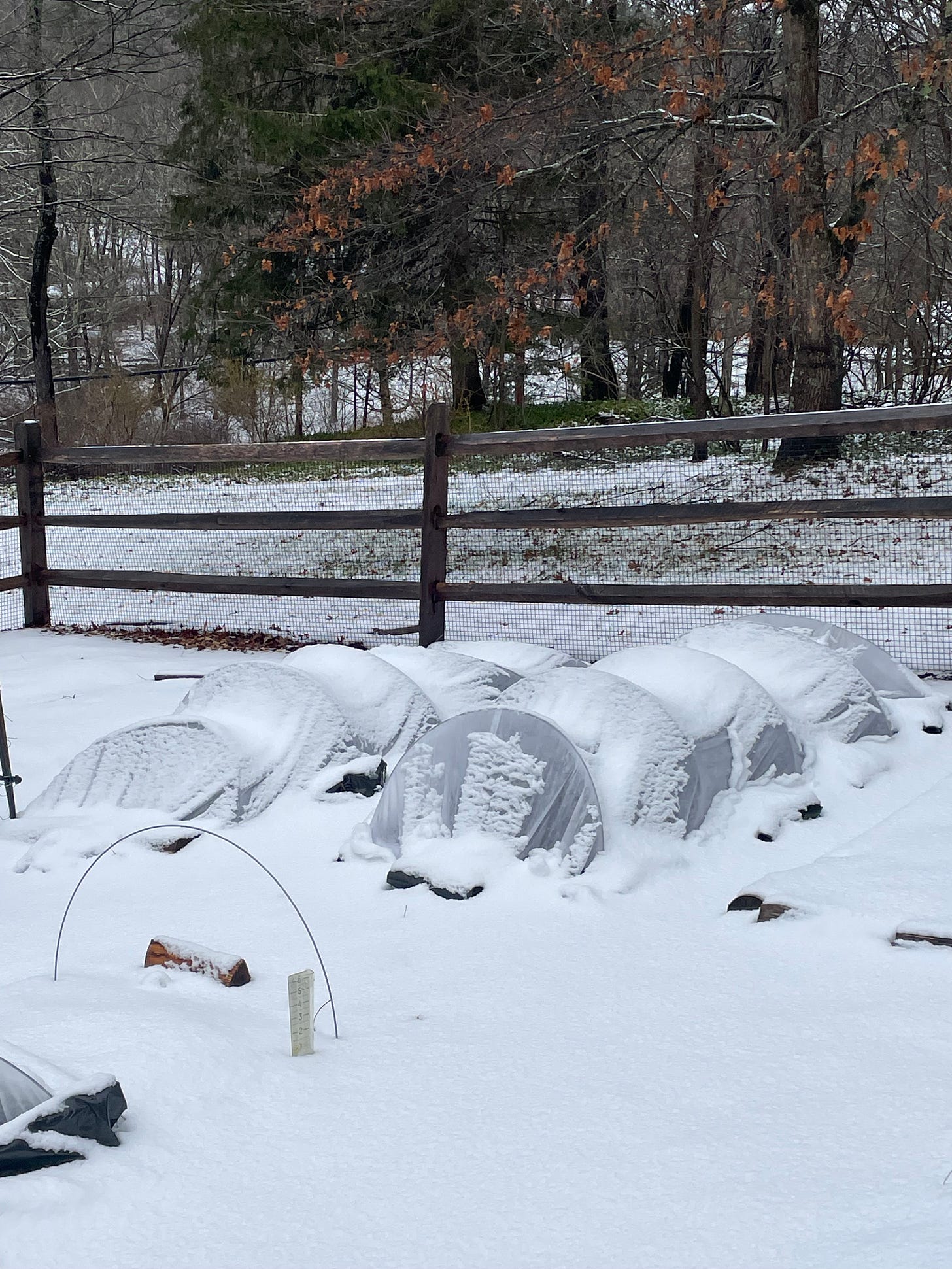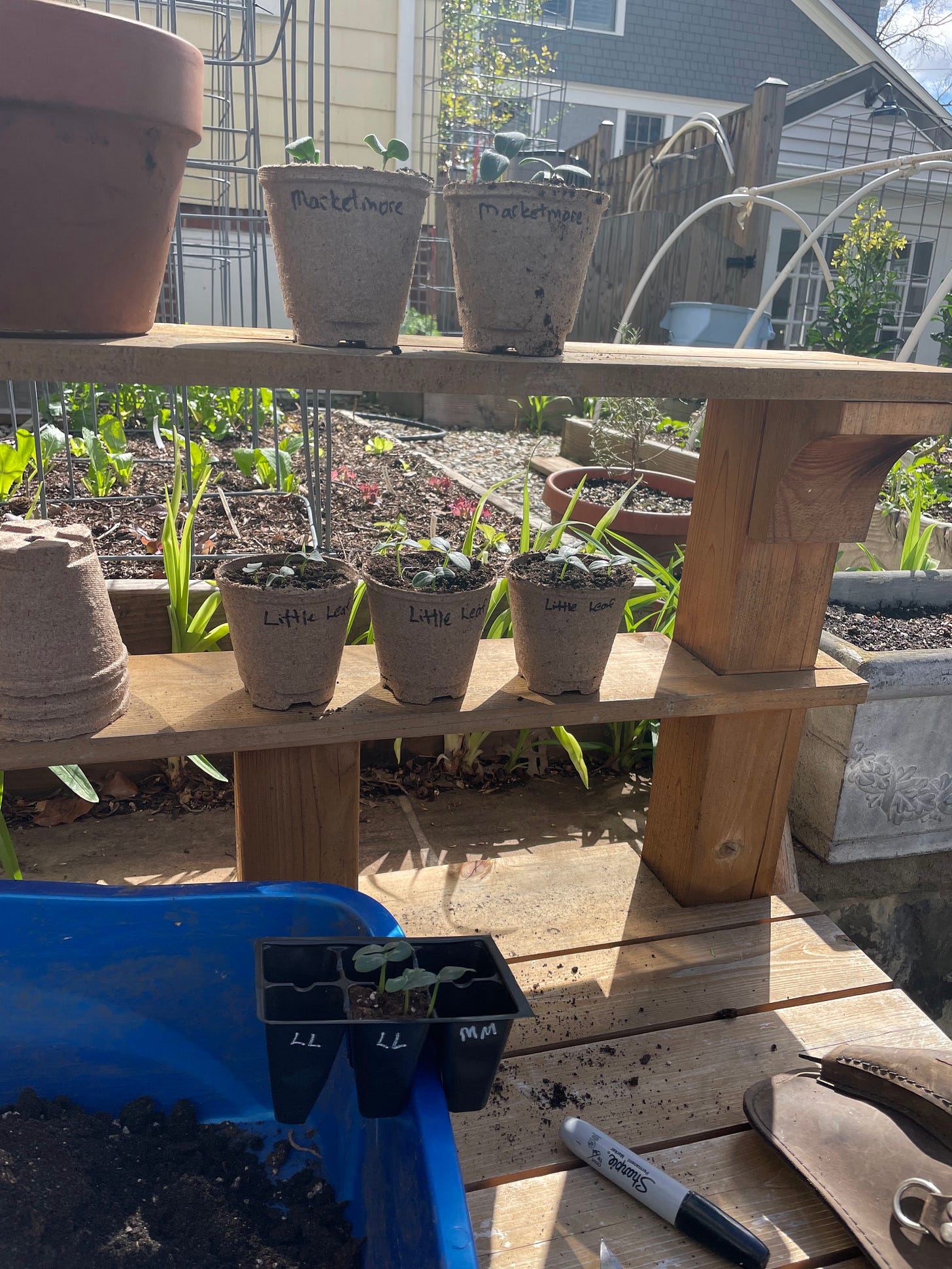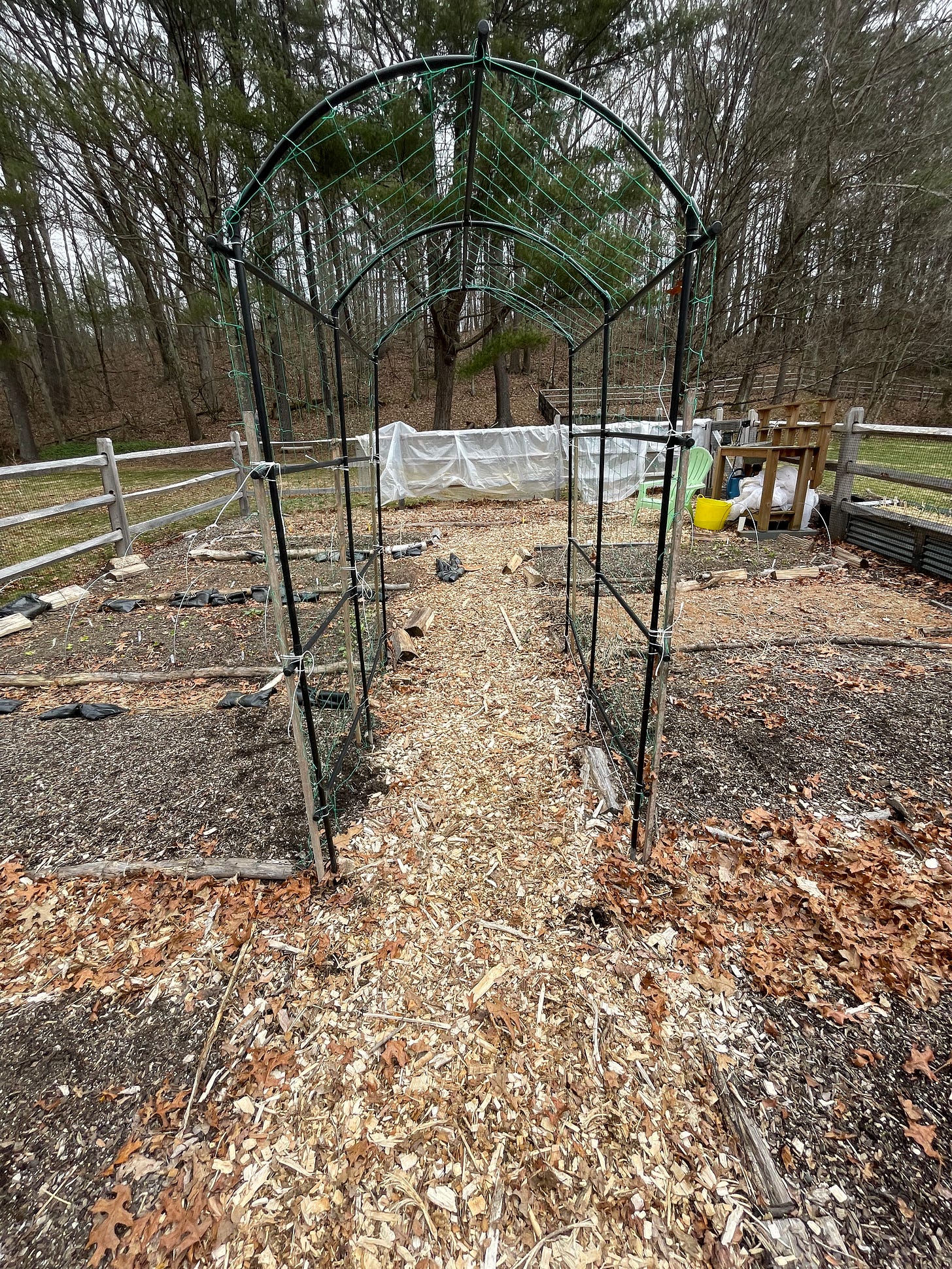Just the other day I was congratulating myself on having survived our first winter up in New England in many years. We were unscathed physically and mentally and fully embraced the short days and long, dark nights with a can-do spirit. It was comforting to know that most days were destined to be indoor days, a time for writing and reading and cooking, early happy hours, mocktails and warm fires. Truth be told, as longtime residents of our village are quick to point out, we didn’t get all that much snow and the only meaningful cold snap lasted about four days back in January.
But now it’s April and I want to know: Where’s the spring?
We just experienced a powerful storm that roared into the Northeast from the Great Lakes. While we only got an inch or two of snow, the storm brought sub-freezing temperatures and the second bout of high winds in the last week with gusts at 50 mph or more. We lost the Internet and cellular service for about seven hours, though unlike thousands of others in New England we didn’t lose our power. We were lucky, and a few hours without phone or web brought its own form of bliss.
It’s supposed to clear up beautifully by Monday’s solar eclipse. We’ll be at 95 percent totality here in western Massachusetts. Our village library, which is truly a treasure, is hosting a watch party with safety glasses, Moon Pies and Sun Tea for all. For us it’s just a five-minute walk down the street.
All that said, I’ve found the relocation of my vegetable garden 300 miles north of Washington, DC, presents its own set of challenges. According to the USDA’s new Plant Hardiness map we live in zone 5b, which is a significant change from Washington’s zone 7b. The USDA map, which was updated last year, reflects a 30-year average of the lowest annual winter temperatures in zones across the United States. Here that means minus-15 to minus-10. In suburban DC, it’s 5 to 10 degrees above zero. It’s all a bit of nonsense, actually, since we didn’t get any lower than 5 above this winter and I don’t believe we have in a few years. It is useful, though, in that it reminds me we’re not in Kansas anymore.
Or Washington.
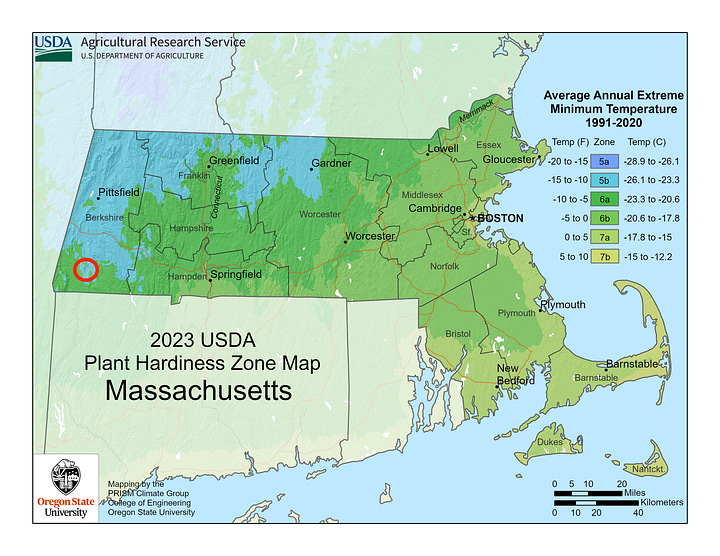
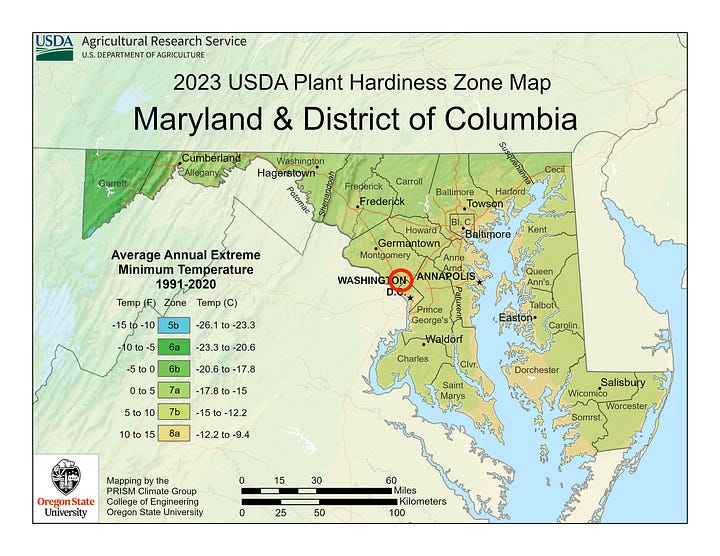
As a point of reference, here’s a view of my garden in Mill River this morning:
Here’s a view my garden in Chevy Chase, Md., on April 9, 2022:
Back in DC, I’d already safely have taken the covers off my vegetable beds and would be actively planting lettuce, kale, arugula and spinach seedlings started indoors a month or so earlier. Down south, I wanted to get these cold-hardy plants into the garden as early as possible because I was racing against the looming heat and humidity, which always seemed to come in May and quickly spelled doom for vegetable greens. Up here, I’m racing to get them into the garden because the growing season is shorter. I want to get every week in that I can. Plus we love early season greens and get impatient. I’m trying to stretch the gardening calendar on the front end and this year, in my new environment, I’ve had a few fits and starts.
I covered two of my beds last November with garden fabric cloth suspended by wire loops in hopes the spinach, arugula, cabbage and broccoli I had planted in late summer would survive into the new year. As a result, we were able to enjoy spinach and arugula in January. The cabbage might have been okay except the slugs had a field day with it over the holidays. I’m still hitless when it comes to growing broccoli over the winter. With the new year, and the beds harvested and empty, I added a layer of 4 mil clear plastic over three of the beds with the aim of keeping the soil warm enough so it would be hospitable for new plants come March.
On March 15 the temperature hit 54 and the soil inside the covered beds was 50 degrees, a good five degrees warmer than the uncovered beds. A temperature of 50 was fine for my early seedlings, which I had already moved from the safety of my seed starting shelves in the basement outside to begin acclimating them to outdoors. By the end of the week I planted them into the covered beds. They were all cold-tolerant greens: arugula, kale, lettuce, broccoli, cabbage, spinach and kohlrabi. I sowed some radish seeds into the soil as well, along with some beet seedlings.
Within two weeks, I decided it was time to remove the plastic covers off the beds and let the plants fare for themselves in the open air. Bad move. A couple cabbage seedlings, and some kale, already looked pretty peaked. The beets were pretty much dead. Four days later, with the temperatures dropping and forecast to get into the 20s, I put the garden fabric back over the beds. I’m going to leave it on for a few more weeks. I’ve also started a whole bunch more backup seedlings in case I need them.
In the meantime, I planted snap pea seeds in the garden — uncovered — along the trellis because they don’t mind the cold. And my tomatoes, peppers and eggplant seedlings are coming along under the grow lights inside, so summer beckons.
Call me the optimistic gardener.




